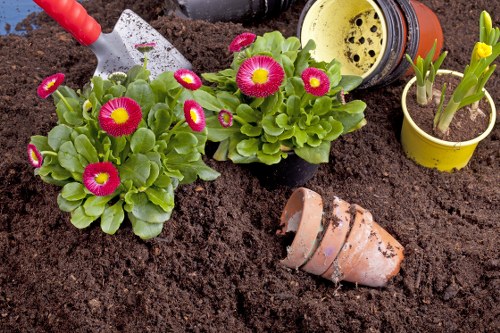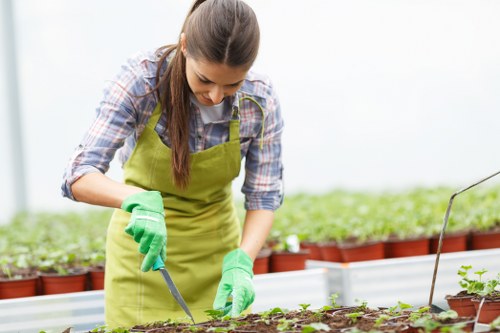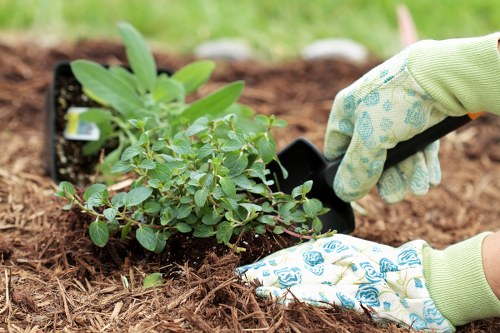Lawn Turf Installation Tooting

Creating a beautiful, green lawn is a dream for many homeowners in Tooting. Whether you’re looking to enhance your garden’s aesthetics or provide a safe play area for your children, professional lawn turf installation can make all the difference. This article explores the essentials of turf installation in Tooting, providing you with the knowledge to achieve a lush, healthy lawn.
Tooting, located in South London, benefits from a temperate climate, making it ideal for turf growth. However, achieving a perfect lawn requires more than just laying down grass. It involves careful planning, preparation, and maintenance. Understanding the local climate, soil conditions, and the best turf varieties for the area is crucial for a successful installation.
Choosing the right type of turf is the first step in the installation process. There are various types of grass available, each with its unique characteristics. Factors such as sun exposure, foot traffic, and maintenance preferences should influence your choice. In Tooting, popular options include fescue, ryegrass, and Bermuda grass, each offering different benefits in terms of durability and appearance.

Benefits of Professional Turf Installation
Opting for professional turf installation services in Tooting ensures that your lawn is installed correctly the first time. Professionals bring expertise in soil preparation, turf selection, and installation techniques, saving you time and effort. A professionally installed lawn not only looks better but also establishes more quickly, providing instant curb appeal to your home.
Moreover, professionals can offer valuable advice on lawn maintenance tailored to Tooting’s specific climate. They can recommend the best fertilizers, watering schedules, and mowing practices to keep your lawn healthy and vibrant. This ongoing support is invaluable for maintaining the beauty and health of your turf throughout the year.
Additionally, professional installation minimizes the risk of common issues such as turf diseases, uneven growth, and poor drainage. Experienced installers know how to address these challenges, ensuring that your lawn remains resilient and attractive for many years.

Step-by-Step Turf Installation Process
Installing turf involves several key steps, each essential for achieving a high-quality lawn. Proper execution of each stage ensures that the turf takes root effectively and thrives in the long term.
1. Planning and Preparation
The first step is to assess your lawn area and plan the installation. Measure the space, consider the existing landscape features, and decide on the turf layout. Clearing the area of debris, weeds, and old grass is crucial to provide a clean slate for the new turf.
2. Soil Preparation
Healthy soil is the foundation of a thriving lawn. Before laying the turf, the soil should be loosened and enriched with organic matter. Testing the soil pH and nutrient levels helps determine if any amendments are needed to create optimal growing conditions.
Techniques:
- Aerate the soil to improve drainage and root penetration.
- Add compost or well-rotted manure to enhance soil fertility.
- Level the surface to prevent water pooling and ensure even growth.
3. Laying the Turf
Once the soil is prepared, it’s time to lay the turf. Begin at a straight edge, such as a fence or driveway, and work your way outwards. Ensure that the edges of each turf roll fit snugly together to avoid gaps and overlapping.
Tips:
- Stagger the seams like bricks for a more natural look.
- Use a sharp knife to trim any excess turf for a clean finish.
- Gently press the turf into the soil to eliminate air pockets.

Post-Installation Care
Proper care after turf installation is vital for the successful establishment of your lawn. Initial watering is crucial to help the turf roots bond with the soil. Consistent moisture levels support healthy growth and prevent the turf from drying out.
In the weeks following installation, avoid heavy foot traffic on the new lawn. This allows the grass to establish without being damaged. Regular mowing, beginning once the turf starts to grow, keeps the grass healthy and encourages dense growth.
Fertilizing your lawn according to the recommended schedule provides the necessary nutrients for robust growth. Additionally, monitoring for pests and diseases helps address any issues promptly, ensuring your lawn remains in excellent condition.

Choosing the Right Turf Provider in Tooting
Selecting a reputable turf provider ensures that you receive high-quality grass suited to Tooting’s environment. Look for providers with positive reviews, a wide selection of turf varieties, and knowledgeable staff who can offer expert advice.
Consider visiting local suppliers to see samples of turf and discuss your specific needs. A good provider will guide you through the selection process, helping you choose the best turf type for your lawn’s conditions and your personal preferences.
Additionally, inquire about delivery options, installation services, and aftercare support. A comprehensive service package from your turf provider can simplify the installation process and ensure the long-term success of your lawn.
Maintenance Tips for a Healthy Lawn
Maintaining your lawn is an ongoing process that requires regular attention. Here are some essential maintenance tips to keep your turf in top condition:
- Watering: Water deeply and infrequently to encourage deep root growth.
- Mowing: Keep the grass at an optimal height, typically around 2.5 to 3 inches.
- Fertilizing: Apply fertilizers as needed to replenish soil nutrients.
- Weed Control: Regularly remove weeds to prevent competition for resources.
- Aeration: Aerate the soil annually to improve air and water penetration.
Common Challenges in Turf Installation
While turf installation can transform your garden, it comes with its set of challenges. Understanding these potential issues helps you prepare and address them effectively.
Poor Soil Quality
Soil that is too compact, nutrient-poor, or has an incorrect pH can hinder turf growth. Conducting a soil test and amending the soil accordingly can mitigate these problems.
Inadequate Watering
Both overwatering and underwatering can damage your lawn. It’s important to establish a balanced watering routine based on the specific needs of your turf type and local weather conditions.
Pest and Disease Control
Pests like grubs and diseases such as fungal infections can affect turf health. Regular monitoring and prompt treatment are essential to maintain a healthy lawn.
Costs of Turf Installation in Tooting
The cost of turf installation varies based on factors such as lawn size, turf type, and additional services like soil preparation and fertilization. On average, homeowners in Tooting can expect to pay between £5 to £10 per square meter for professional turf installation.
While the initial investment may seem significant, a professionally installed lawn increases your property’s value and reduces long-term maintenance costs. Additionally, the aesthetic and functional benefits of a well-maintained lawn contribute to your home’s overall appeal.
Environmental Benefits of a Healthy Lawn
A lush, green lawn offers numerous environmental benefits. It acts as a natural air purifier, absorbing carbon dioxide and releasing oxygen. Turf also helps in reducing soil erosion, managing rainwater runoff, and providing a habitat for beneficial insects.
Moreover, well-maintained lawns contribute to the urban heat island effect mitigation by cooling the surrounding air through evaporation and shading. Choosing environmentally friendly practices, such as using organic fertilizers and minimizing pesticide use, enhances these benefits.
Local Regulations and Permissions
Before proceeding with lawn turf installation in Tooting, it’s important to check local regulations and obtain any necessary permissions. Some areas may have restrictions on water usage, especially during drought conditions, and guidelines on lawn maintenance practices.
Consulting with local authorities or a professional installer can help ensure that your turf installation complies with all relevant regulations. This proactive approach prevents potential fines and ensures that your lawn project proceeds smoothly.
Seasonal Considerations for Turf Installation
Timing your turf installation according to the seasons can significantly impact its success. In Tooting, the best times for laying turf are during the spring and early autumn when temperatures are moderate, and rainfall is more predictable.
Planting in the spring allows the turf to establish before the heat of summer, while early autumn provides a cooler climate for root development. Avoiding extreme weather conditions ensures that the turf can take root effectively and thrive.
Innovative Turf Solutions
Advancements in turf technology offer innovative solutions for modern lawns. Artificial turf alternatives provide low-maintenance options, while hybrid systems combine natural grass with synthetic fibers for enhanced durability and resilience.
Furthermore, eco-friendly turf options incorporate recycled materials and sustainable practices, reducing the environmental impact of your lawn. Exploring these innovative solutions can help you achieve a beautiful lawn that aligns with your values and lifestyle.
Conclusion
Lawn turf installation in Tooting is a rewarding investment that enhances your home’s beauty and functionality. By understanding the essential steps, choosing the right turf provider, and committing to proper maintenance, you can achieve a stunning, healthy lawn that serves as a source of pride and enjoyment for years to come.
Frequently Asked Questions
1. How long does it take for new turf to establish in Tooting?
Typically, new turf begins to establish within 2-3 weeks, depending on weather conditions and proper care. Full establishment can take up to a few months.
2. What is the best time of year to install turf in Tooting?
The optimal times for turf installation are in the spring and early autumn, when temperatures are moderate and rainfall is consistent.
3. How should I water my new turf after installation?
Water the turf daily for the first two weeks to keep the soil consistently moist. Gradually reduce the frequency as the turf establishes.
4. Can I install turf over an existing lawn?
Yes, but it requires thorough preparation, including removing existing grass, leveling the soil, and enriching it with nutrients to ensure successful turf establishment.
5. What maintenance is required after turf installation?
Regular watering, mowing, fertilizing, weed control, and occasional aeration are essential for maintaining a healthy and vibrant lawn.